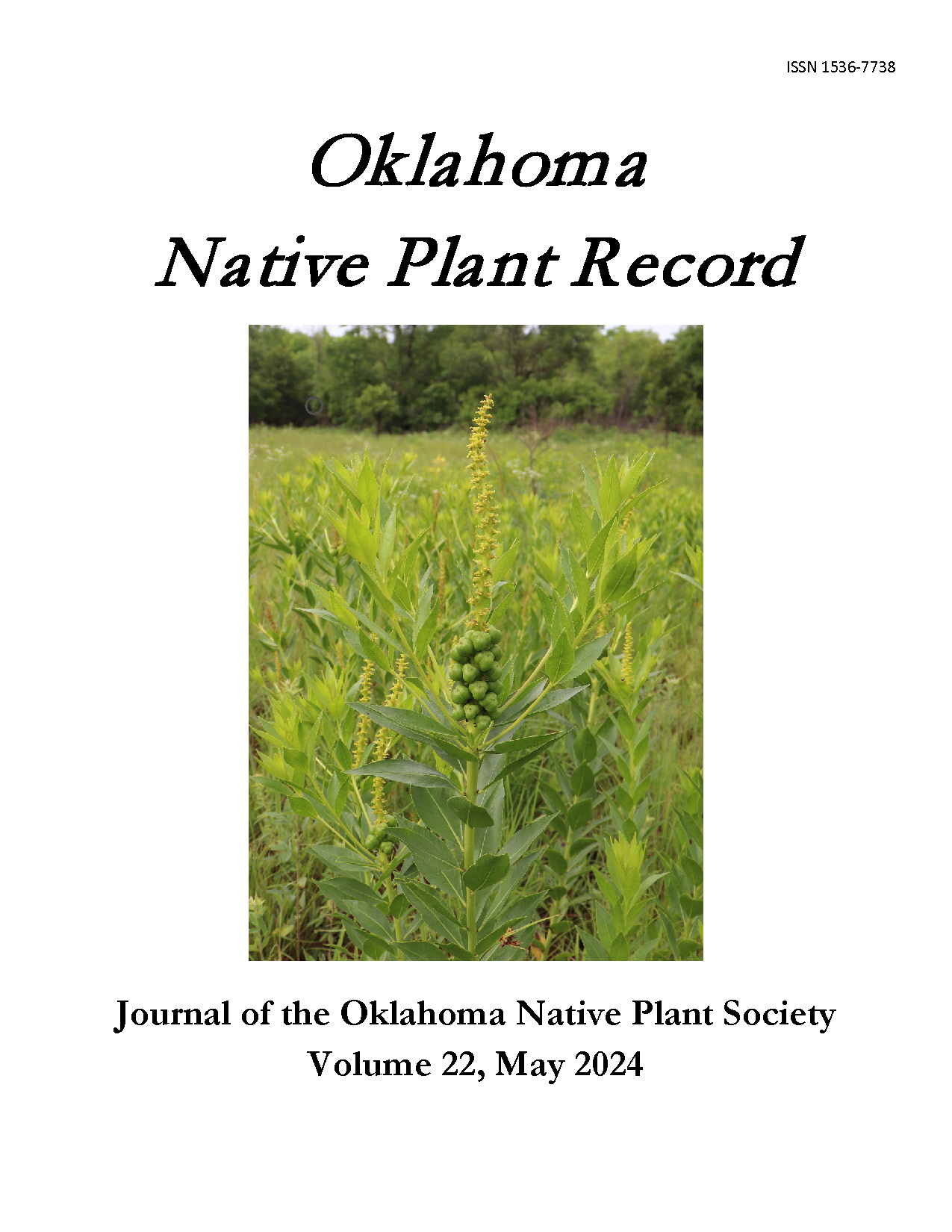Post-Burn, Post-Flood Effects In A Degraded Grassland, Lake Texoma, Bryan County, Oklahoma
Main Article Content
Abstract
Plant communities change over time, sometimes leading to an increase or decrease in biological diversity. Often, absence of active management of a site leads to its degradation including loss of native species and invasion by non-native weeds. Lake Texoma, Texas and Oklahoma, represents an area where extensive landscape change has happened over the course of almost a century. The Denison Dam was completed in 1938, forming the lake, which over time has altered conditions in the forested and formerly-grazed locations surrounding it. The location studied in this paper is a 186-ha tract of land situated between Johnson Creek and the Roosevelt Bridge in Bryan County, Oklahoma. In summer 2000, a species list was compiled for a grassland located at the lake site as part of a larger study. This grassland comprised ~10% of the total site area. Following two major floods and an extended drought, the site was resampled in 2018. Results indicated it had suffered a serious decline in species richness and an increase in abundance of invasive or encroaching species. Species richness was reduced by approximately 50% between 2000 and 2018. Fewer transects were sampled in 2018 because of woody encroachment on the original site. In spring 2021, following an extensive prescribed burn, the site was resampled to see if burning led to any reduction in undesirable species. The most frequent species in 2000 included Panicum philadelphicum, Lespedeza virginica, Rudbeckia hirta and Ambrosia psilostachya and in 2018 they were Lespedeza cuneata, Ambrosia psilostachya, and Dichanthelium oligosanthes. It is possible that the invasive Lespedeza cuneata (sericea lespedeza) spread after a 2007 flood because of some combination of reduced competition and transport of seed in floodwater. In 2021, the most frequent species were the same as in 2018, showing little effect of the burn. However, the Shannon diversity and evenness in both early and late summer sampling periods after the burn were higher than those for the 2018 data, suggesting that the burn may have had some effect. To attempt to restore the site to more “native” conditions would probably require some combination of regular burning, flash grazing, and possibly herbicide use. Once sericea lespedeza establishes, it is very difficult to eradicate from a location.
Article Details

This work is licensed under a Creative Commons Attribution-NonCommercial-ShareAlike 4.0 International License.
Articles (c) The Authors
Journal compilation (c) Oklahoma Native Plant Society
Except where otherwise noted, this work is licensed under a Creative Commons Attribution-NonCommercial-ShareAlike4.0 International License, (CC BY-NC-SA 4.0) https://creativecommons.org/licenses/by-nc-sa/4.0/, which permits unrestricted use, distribution, and reproduction in any medium, provided the original work is properly attributed, not used for commercial purposes, and, if transformed, the resulting work is redistributed under the same or similar license to this one.

